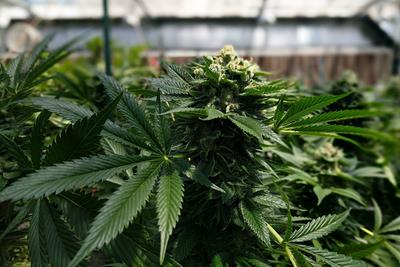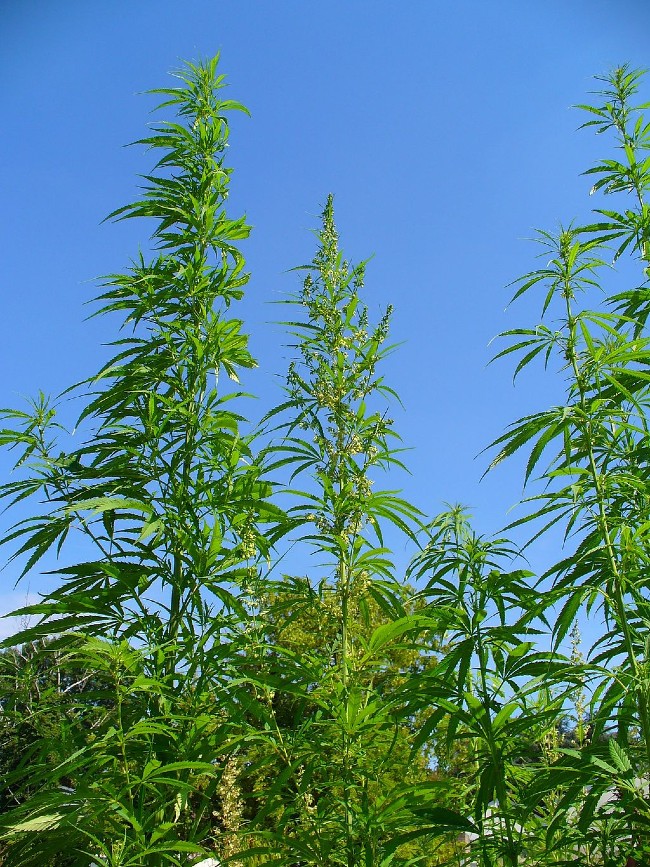
Saturday December 18, 2021
By Paul Barach
 Growing
Growing
What’s easier to grow: Indica or Sativa plants? Ask any experienced cannabis grower and they’ll probably answer, “there’s no real difference between Indicas and Sativas anymore. They’re all pretty much hybrids at this point.”
However, there are still indica-leaning and sativa-leaning plants, and knowing the differences in how to grow them makes an enormous difference for first-time growers.
That’s why PotGuide is here with some helpful information on the differences in growing indica vs sativa plants.
But first, let’s delve into what we mean by indica vs sativa.
A Brief History of Indica vs Sativa Plants
Around 12,000 years ago, humans first started cultivating the cannabis plant, and around 4,000 years ago, enough people had inhaled the cannabis flowers to say, “this is dope, you should try some,” in whatever languages were being spoken. From there, cannabis spread around the world, evolving further characteristics based on the local climate and what each society wanted to gain from it.
Besides growing in different shapes to adapt to the local environment, it also began to produce different terpene and cannabinoid ratios to attract local pollinators, repel local pests, and otherwise make itself welcome.

Sativa cannabis plants adapted to growing in the hotter, wetter regions like Thailand, Mexico, or South Africa by growing taller and spindlier, with narrow leaves, wispy buds, and more spacing in between branches. This helped prevent mold or pests from growing on them in the high humidity. They also developed a longer flowering time under the constant sun.
Indica cannabis plants adapted to the drier, colder, mountainous parts of the world like India, Northern China, and Nepal by growing shorter and bushier with denser buds to preserve moisture. They also developed a shorter flowering time due to the short summers.
Indica Vs Sativa Leaves and Buds
Because of these adaptations, traditional indicas and sativas appear different. Indicas tend to have wider, shorter leaves with broad blades. This is the traditional “pot leaf” you find on most marijuana-themed accessories. Sativa leaves are longer with thinner blades.

Sativa buds similarly tend to be longer, airier, and thinner, while indica buds are compact and dense.
Differences in growing Indica vs Sativa Plants
Thanks to years of cross-breeding, each cultivar is a mix of Landrace indica and sativa genetics. Thus, each strain has their own specific grow requirements. However, there are some basic growing requirements that all sativa-leaning strains have in common, and all indica-leaning strains have in common. We’ll discuss those basic differences in growing indica vs sativa below.
Growing a Sativa Plant
Since Sativa-leaning plants evolved in the tropics, they’re used to growing under long hours of light, higher heat, and greater humidity. They’re less hardy than indicas, so they generally aren’t the best plants for beginners to start on.
Size
Sativa plants will start out squat, but they won’t stay that way for long. Once the light cycle changes from vegetative to budding, sativas tend to shoot up fast. Be sure that your plants have plenty of room above them and plenty of room in the pot below them. A five or ten gallon bucket gives them ample space to spread out their roots.

Environment
Because they evolved in the tropics, the more light intensity you can give them, the better they’ll respond. Usually sativas grow on a 12/12 lighting schedule. As long as you keep your grow room at a steady 85 degrees Fahrenheit and you keep the humidity between 55-65% RH, you’re golden.
Feeding
Despite their quick growth rate, Sativas generally prefer light-fertilizer and don’t like being fed too often. Too much fertilizer can affect terpene production. Water your plants regularly, but beware of signs of overwatering.
Flowering
Sativas tend to take 10-12 weeks to flower, but this can be sped up by shortening your light times. Set them for eight hours on during those the final weeks before you expect to harvest. Sativa buds produce most of their terpenes at ripening, and the buds will shrink once they’ve cured.
Growing an Indica Plant
Since indica plants evolved in drier, colder mountain regions, they’re more sensitive to high temperatures and humidity, but more resilient overall and will flower faster. These are great strains for beginners.
Size
Indicas tend to grow squatter and denser than sativas, which makes them preferable for indoor grows with limited space. However, you’ll have to be vigilant about training them to grow up and not out to prevent molding or damage from other plants. A 5 gallon pot should be fine for an indica.
Environment
Because indicas didn’t evolve in humid environments, they require more airflow and more vigilance about humidity. They’re more susceptible to bud rot and mold. Keep the humidity at 50% during the growth phase, and below 40% in the last few weeks before harvest.

Indicas are used to temperature variations and generally thrive at temperatures below 77 degrees Fahrenheit. Those temperatures should drop anywhere from 6-9 degrees lower when the grow lights are turned off.
Feeding
Indicas do best with plenty of nutrients, but beware the signs of nutrient burn. It’s better to underwater indicas than overwater them. A good rule of thumb is to water every two or three days once the plant is mature. If you poke your index finger down to the first knuckle and the soil is still dry, it’s time to water again.
Flowering
Indicas will tend to flower in around 8 weeks with dense, firm, resinous buds. You can use the same lighting schedule as a sativa, but indicas are more sensitive to direct, intense light.
Conclusion
The wide variety of genetics on the market means that each strain will grow a bit differently, but being familiar with the general growing practices of different cannabis types can help get new growers on the right path. As you grow, monitor your plants for changes, especially when adding something new to the care routine. Note the changes that your plants have in reaction and you can refine these techniques as your experience grows.
Frequently Askes Questions
Is Indica Easier to Grow Than Sativa?
Generally, indica-leaning plants are easier to grow than sativas due to their short flowering time, more compact shape, and hardier constitution.
How Can You Tell the Difference between Indica and Sativa Buds?
Indica buds tend to be denser and firmer, while sativas tend to be lighter, longer, and thinner. However, always keep in mind that these are general guidelines, and appearance can vary wildly, regardless of the type.
Does Sativa Grow Tall?
Yes. Sativas generally grow taller and spindlier than Indicas. Some can reach heights of up to 20 feet outdoors.
Do Different Strains Grow Differently?
Yes. Depending on whether the strain’s genetics lean more towards indica or sativa, it will affect the plant’s appearance, flowering cycle, environmental requirements, and more.
How Do You Identify Sativa?
Generally, sativa-leaning plants will be taller and spindlier, with thinner leaves. Their buds are also lighter, longer, and thinner, and tend to grow up the branches (aka foxtailing).
What is the Difference between Indica and Sativa and Hybrid Buds?
Indica buds are more compact and resinous, sativa buds are longer, lighter, and airier, and hybrid buds are a mix of the two.
Which do you find easier to grow? Indica or sativa?
Photo Credit: Cannabis Tours (license)







